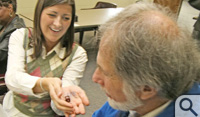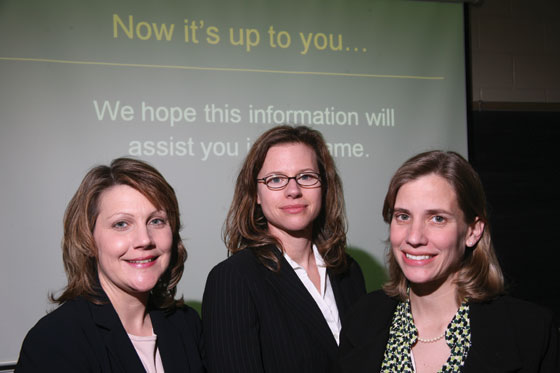Rational Misbehavior
Conservative Investor with a high-risk portfolio? You're a piece of the 'annuity puzzle.'
Ah, fixed lifetime annuities. They're the sure thing: A check every month until you die. No matter what the market is doing - bull, bear or pig in a tutu - you're going to get paid.
But investors face a myriad of other choices: including higher-risk investment vehicles that offer the possibility of higher payoffs. Because of their steady nature and their guarantee of payments until death, economists have expected that more people planning for retirement would choose annuities over higher-risk options. After all, in many cases, it's the rational choice.
That theoretical assumption of rational behavior by investors has long been demonstrated not to apply to real, live people when they make financial decisions for their retirement or other long-term goals. The question left on the minds of economists and finance experts is, "Why?" They've even given the phenomenon a name. They call it the "annuity puzzle." If perfectly normal people aren't basing their financial decisions on perfectly logical financial rationale, then what is influencing their behavior?
Researchers at the Mason School of Business and the faculty of Arts and Sciences at the College of William and Mary found that a few tweaks in a PowerPoint presentation can make all the difference in the choices a person makes when it's time to invest.
Applying the rational
Faculty members Julie Agnew, Lisa Anderson and Lisa Szykman and former faculty member Jeff Gerlach collaborated over the last two years to put together at least some of the pieces of the annuity puzzle. Funded by a $250,000 Financial Investor Education Foundation grant and staffed by a group of dedicated William and Mary students, they designed an experiment to determine who chooses annuities and why.
 "What we sought to do with our experiment was to control some of the rational reasons - like unfair pricing - why people wouldn't buy annuities," said Agnew, an assistant professor of economics and finance in the Mason School. "By getting get rid of all these rational reasons, we were able to focus on other reasons."
"What we sought to do with our experiment was to control some of the rational reasons - like unfair pricing - why people wouldn't buy annuities," said Agnew, an assistant professor of economics and finance in the Mason School. "By getting get rid of all these rational reasons, we were able to focus on other reasons."
The researchers recruited about 1,200 people between the ages of 18 and 87 from the College's campus and from greater Williamsburg to participate in the experiment. The participants were grouped into six general categories: male and female retirees, male and female working adults (early-, middle- and late-career), and male and female students.
From the summer of 2006 through the spring of 2007, the researchers brought the participants to the College and ran them through the experiment. The participants were first quizzed to determine their financial literacy and risk preferences. Next, each participant sat through a narrated PowerPoint session presenting a set of investment options. The sessions were designed to be very similar to those familiar investment-choice presentations conducted in human resources departments and the offices of financial-planning firms across the country.
Thickening the plot
 Now, here's the twist: the PowerPoint sessions weren't all the same. One session was scripted to show a preference towards annuities. Another was biased toward other investments. The third was neutral. Each participant saw one of the three different presentations.
Now, here's the twist: the PowerPoint sessions weren't all the same. One session was scripted to show a preference towards annuities. Another was biased toward other investments. The third was neutral. Each participant saw one of the three different presentations.
After sitting through the PowerPoint session, the fun began. Each participant was given $60 cash American and played what the researchers titled the "Retirement Game[link to annuity_sidebar]." Players were asked to choose to either buy an annuity or to invest in a self-chosen portfolio with a risk-free asset and a simulated market. Once participants had made their decision, student researchers rolled a ten-sided die to determine how long participants "lived," that is, stayed in the game.
Participants who chose the annuity received $16.77 for every round they survived, up to a maximum of six rounds. Those who selected the investment option had to choose how much to withdraw and allocate between the market and their risk-free asset. The allocations were made every round until the subject "died." The returns on the investments were determined every round with additional dice rolls.
Every round represented one month of real time, and participants were paid in post-dated checks. Most participants walked away with about $50 in checks, and some made more than $100. After the game ended, as the checks were being processed, the participants took an 11-page survey to collect information on demographic traits and real-life investment choices.
"We wanted to make sure that we captured every possible variable that might explain what people did in the experiment," said Anderson, a professor in the economics department of Arts and Sciences.
After examining the data from the experiment, researchers found that people were strongly influenced by the presentations they had received. People who saw the presentation skewed toward annuities were likely to choose the annuity option in the Retirement Game. Those who were in the session slanted toward other investments overwhelmingly made higher-risk choices.
What you saw is what you chose
 "Basically, whatever five-minute presentation people saw, that pretty much governed the choice that they made," said Szykman, an associate professor of marketing at the Mason School. "So, in other words, we were able to push people in one direction or another based on a five-minute marketing presentation."
"Basically, whatever five-minute presentation people saw, that pretty much governed the choice that they made," said Szykman, an associate professor of marketing at the Mason School. "So, in other words, we were able to push people in one direction or another based on a five-minute marketing presentation."
Szykman said that marketers have known for years that the way information is presented has a huge impact on decision-makers. However, bringing these theories into the world of economics, where experts assume that people act "rationally" based on financial outcomes, is something very new.
"We're going into this area now and saying, look, take something as simple as telling people they could lose money in the stock market. If you highlight what their losses could be, then they're going to be more likely to not want to do that and they're going to flip over and do the annuity instead," she said. "This is called negative framing."
Positive side of negative framing
 Agnew added that the concept of negative framing is used extensively in fields like healthcare. "How do you get someone to get a colonoscopy? Emphasize that you can die if you don't get it," she said.
Agnew added that the concept of negative framing is used extensively in fields like healthcare. "How do you get someone to get a colonoscopy? Emphasize that you can die if you don't get it," she said.
Despite their findings, the researchers said they do not want their research to be taken as a marketing lesson for people trying to sell annuities. Rather, they want financial planners and the public to be aware of how hidden biases can affect investment decisions.
"If you realize these biases exist, then maybe you will process that information differently and not be as susceptible to them," said Szykman.
Agnew said that their study is particularly relevant now, as increased concern about the health of the Social Security system, coupled with a decline in defined-benefit plans, have more people taking retirement planning into their own hands.
"This is big," she said. "Given what's happening with retirement and Social Security right now, this is just a hot area that people are looking at. It's not just the academics."
The experiment provided researchers with a wealth of data, which they are still interpreting. One early finding that has surprised them was the difference in how women and men responded to the biases.
"Men are affected by both biases, versus the neutral condition. They can be pushed to the annuity choice or pushed to the investment choice," said Agnew. "Whereas with women, it's only the investment bias that influences them. We have to test and do other studies to find out why that is."
Lauren Queen '08, a marketing and economics major who helped conduct the experiment, said that the experience taught her the importance of collecting detailed information on individual participants. She is interested to see what further interpretation of the data reveals. For instance, she'd like to know how many people were accurately able to see that the presentations were biased.
"In two-thirds of the cases, there was a bias," she said. "I'd like to know how many participants were able to pick up on that bias."
The professors said that this research would not have been possible at many other schools. For instance, they said, the College's emphasis on undergraduate research provided them with help from undergraduate students from a variety of relevant programs and majors, including neuroscience, psychology and finance.
"The things that are unique to our school made it possible," said Szykman.
The professors also said that this kind of research was unique to William and Mary because the College allows professors the freedom to work collaboratively across disciplines.
Szykman said that at any other school, faculty within a marketing department (such as herself) wouldn't get much credit for this research because it wasn't published in a marketing journal.
"But here, it's celebrated," she said. "Our business school's philosophy is such that they're only looking at the research - and they're thrilled with this. It's good research that makes a difference."
"This highlights the benefits of interdisciplinary work," said Anderson. "Clearly economists have something to learn from other fields and vice versa."
The professors have published a paper on their research in a recent issue of American Economic Review. They expect to be able to publish several other papers from their research because of the large and diverse population they sampled. Among other things, they are currently examining differences between how students and adults chose to invest and how the kind of returns participants received influenced how they chose to invest in the next rounds.
"All of this is paying off now," said Agnew. "We're at the fun part of the project." 















